Every Tuesday we have music with Miss Lisa. Half of our classes go in the morning and the other half goes in the afternoon. Here is what we have been up to this month!
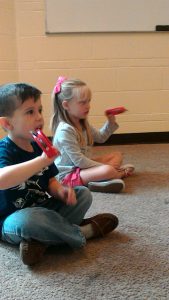
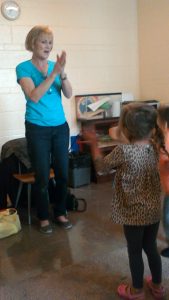
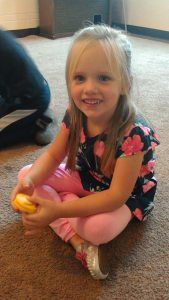
Every Tuesday we have music with Miss Lisa. Half of our classes go in the morning and the other half goes in the afternoon. Here is what we have been up to this month!



As one of our first graders said this week, “There’s no way it is already November!” We can’t believe we are already heading into lower temperatures and Christmas Show preparations! Research projects are in full swing in our classroom. First and second year students are researching dinosaurs, third year students are learning about the human body, and fourth year students are beginning cell theory and classification of early humans. We have ended our North America Continent Study and are talking about animals, musical instruments, and capitals of South America.
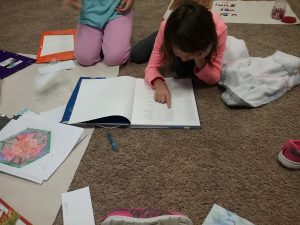
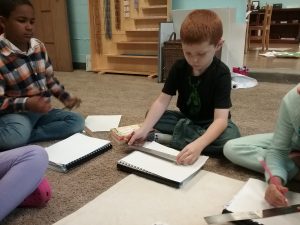
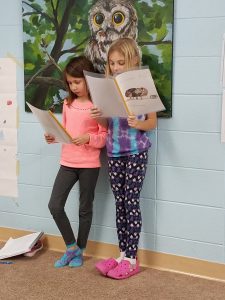
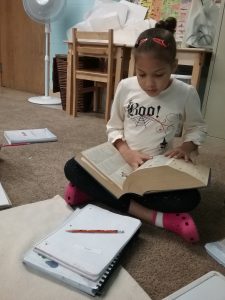
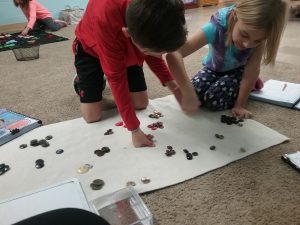
A Peek into Next Week
Next week our Lower Elementary students will be continuing their research, looking at the difference between a point and a solid, and will beginning studying the fundamental needs of humans throughout history. Our fourth year students will continue learning about cells, look into different categories of pronouns, and will classify living things.
REMINDERS:
Parent-Teacher Conferences are Friday, November 17. This is a NO SCHOOL day for students. Please sign up for a conference here.
Cultural Subjects:
We have been counting to Ten in 11 different languages (English, Sign Language, Latin, Spanish, German, French, Greek, Japanese, Arabic with the Lebanese Dialect, Italian, Russian, and Romanian).
Peeking Into The Classroom:
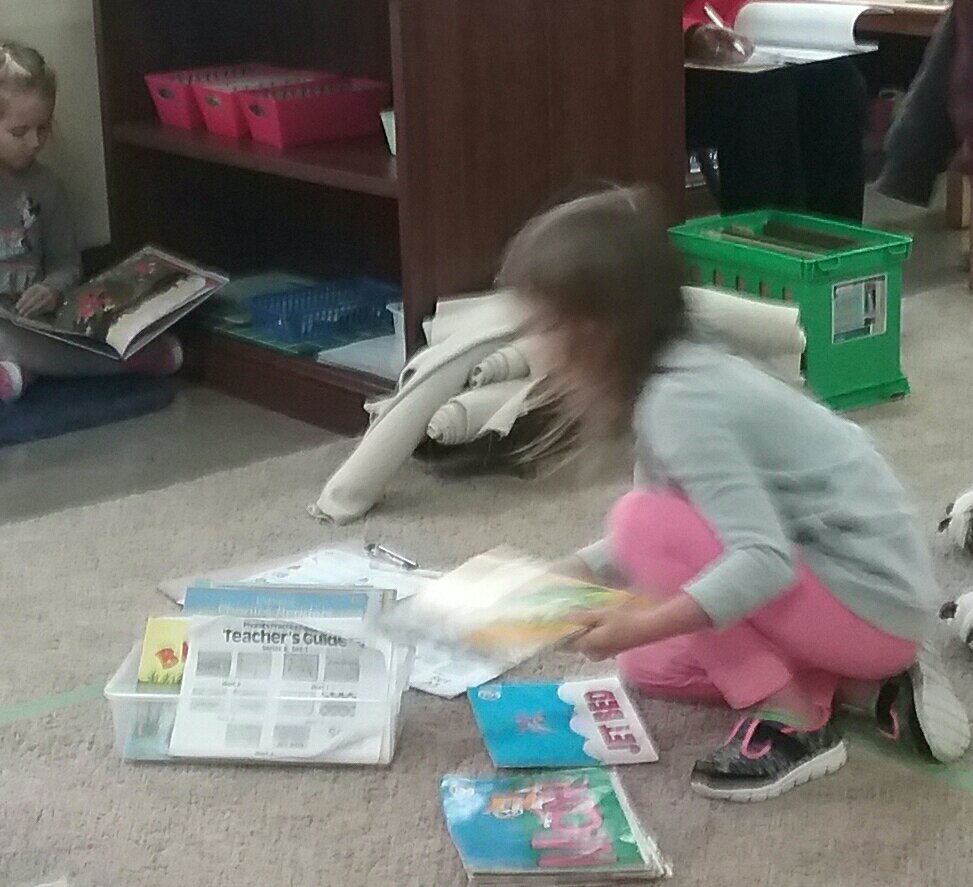
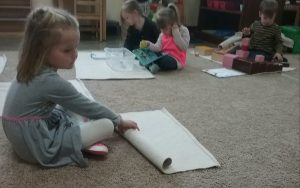

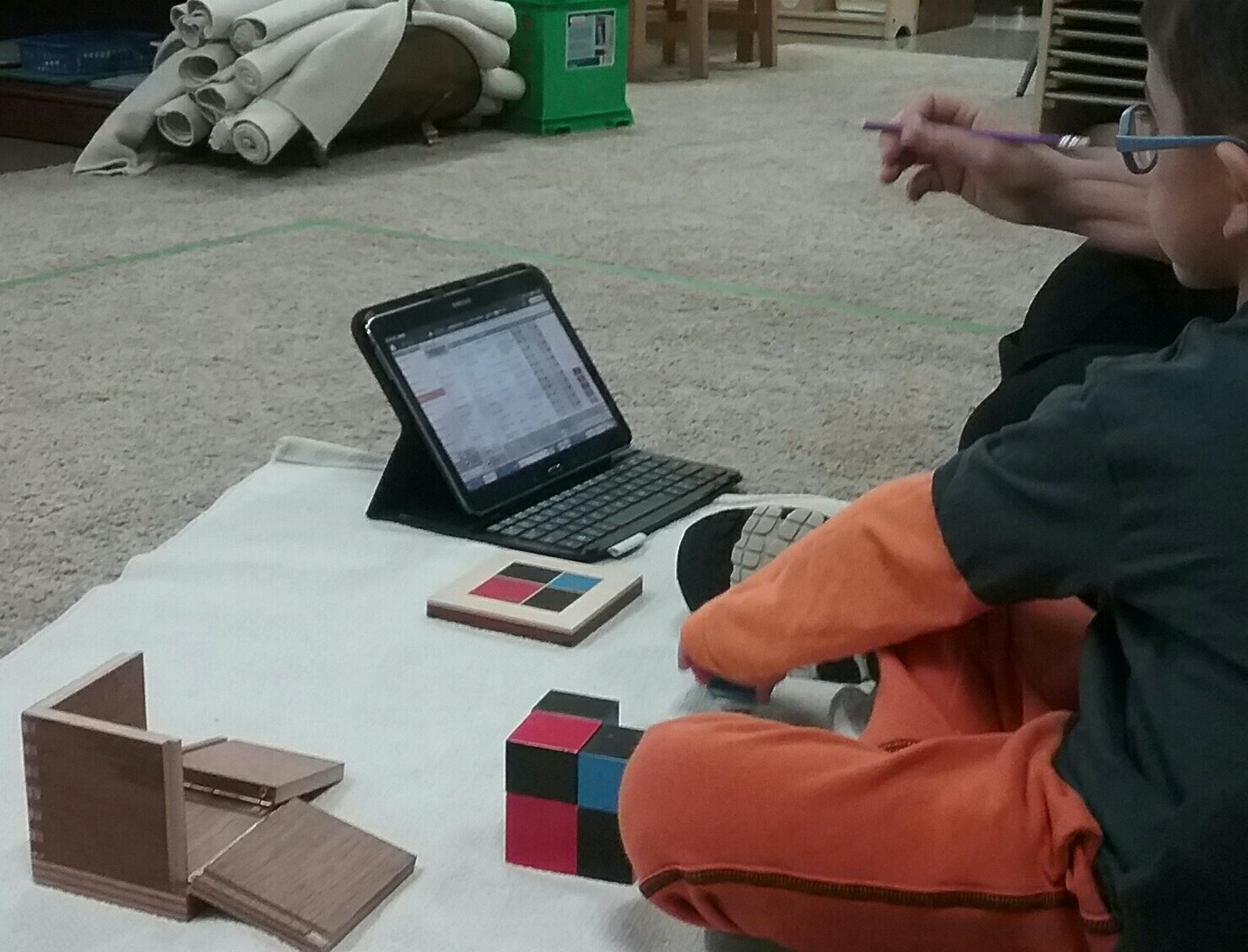
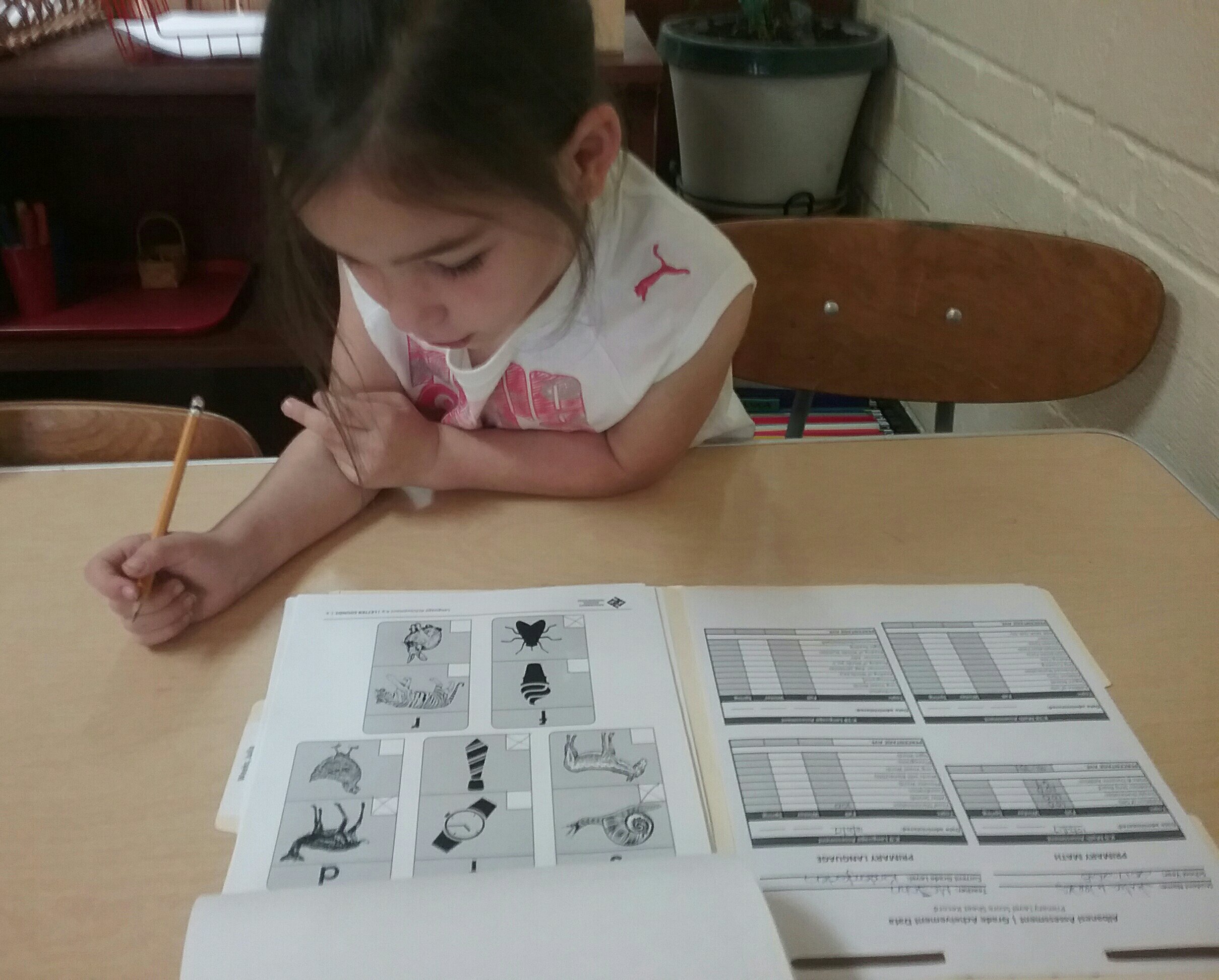
Peek Into Next Week:
Next week we will learn about insects, arachnids, and invertebrates.
Letter of the week: K k
Rhyming word of the week: ox
Upcoming Events:
11/16/17 (Thursday): Progress Reports emailed
11/17/17 (Friday): Parent Teacher Conferences (NO SCHOOL FOR CHILDREN)
11/21/17 (Tuesday): Harvest Party
11/22-11/26/17: Thanksgiving Break
We enjoyed exploring experiments in Science class this month! Here are a few of our favorite experiements:
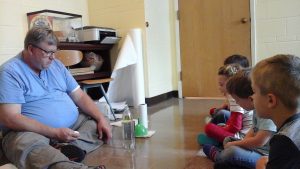
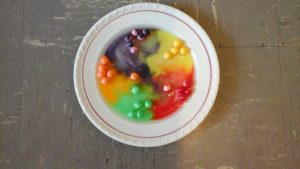
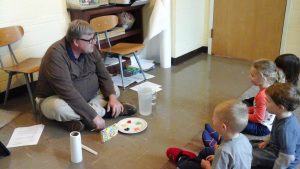
This past week we learned about different body parts. The students learned about the parts we can see on the outside and the parts we can’t see on the inside like our lungs, kidneys, stomach, small intestines, large intestines and heart. They made a model of a lung to keep in the classroom and discovered our anatomy apron where they enjoyed learning about the organs and where each one belonged by attaching the fabric organs to the apron.
Work Time
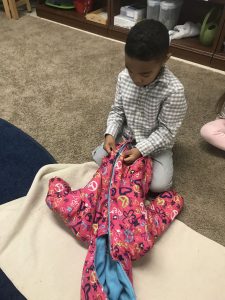
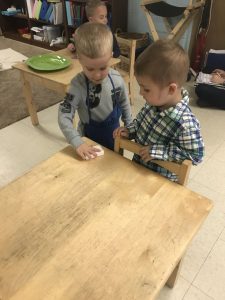
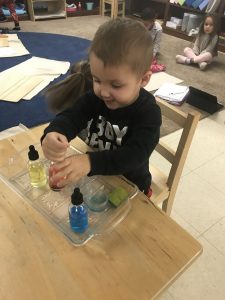
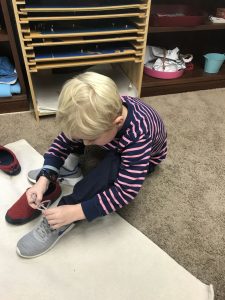
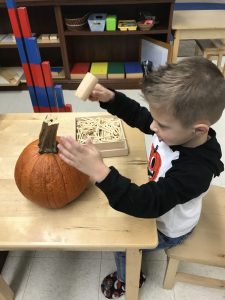
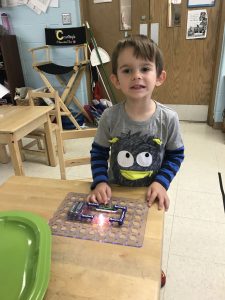
Guest Reader
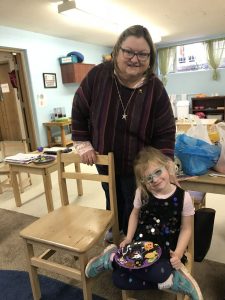
Reminders
November 15, 2017 | Bring Your Parent to Work-Time
November 17, 2017 | Parent/Teacher Conferences | NO SCHOOL for students
November 21, 2017 | Harvest Party
A look into next week: Food Groups
During academic enrichment this week the kindergarten students were hard at work learning how to not only compose and retrieve numbers, but how to do static (no exchanging or carrying when adding) addition using both the golden beads and the stamp game.

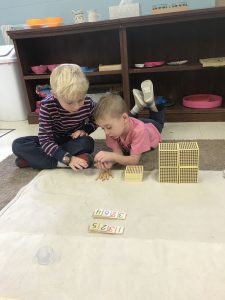
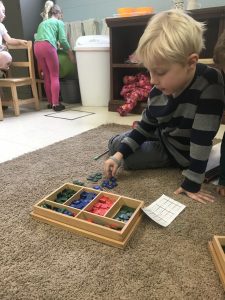
A look into next week: Introduction to exchanging
This week we learned all about Nutrition. We discussed the importance of exercise, went over My Plate and the foods you need to choose for it, the five food groups, and how to wash our hands the right way with a variety of hands on activities, songs, books, and videos.
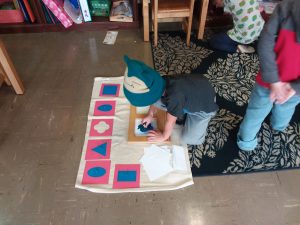
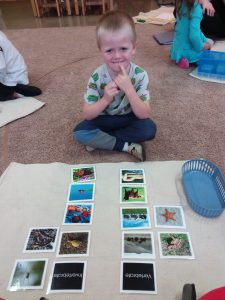
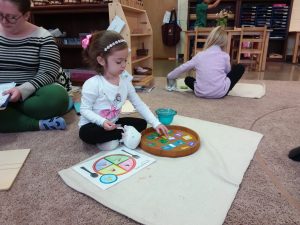
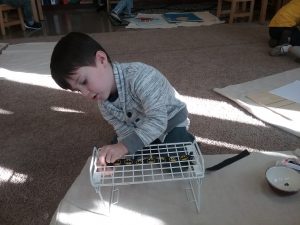
A Peek Into Next Week
Over the next couple of weeks we will be having many lessons on respect, grace and courtesy, kindness, and classroom rules.

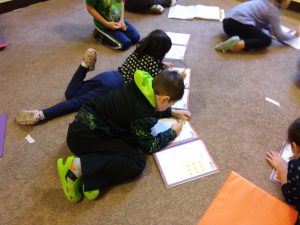
The past two weeks have taken us all the way to the letter Z in Handwriting! We also started answering a couple of journal questions, putting into practice what we have learned thus far. Our two journal questions so far have been “What is your favorite color?” and “What will you be for Halloween?” The goal is to have the children begin to expressively write on their own and to practice their letter formation on paper. I’m so proud of their progress so far!
I would encourage you to help your child practice their handwriting at home by phonetically spelling words on their own. Why not have them help you write the grocery list this week?
This past week in academic enrichment the children were introduced to numerals and quantities of the decimal system using our golden bead materials. They discovered what the numerals look like for different quantities from 1 to 9000.
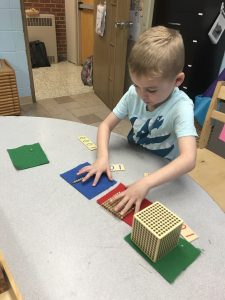
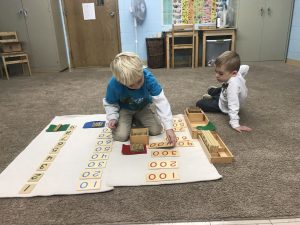
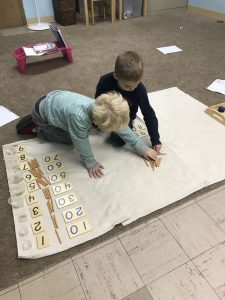
A look into next week: Introduction to addition